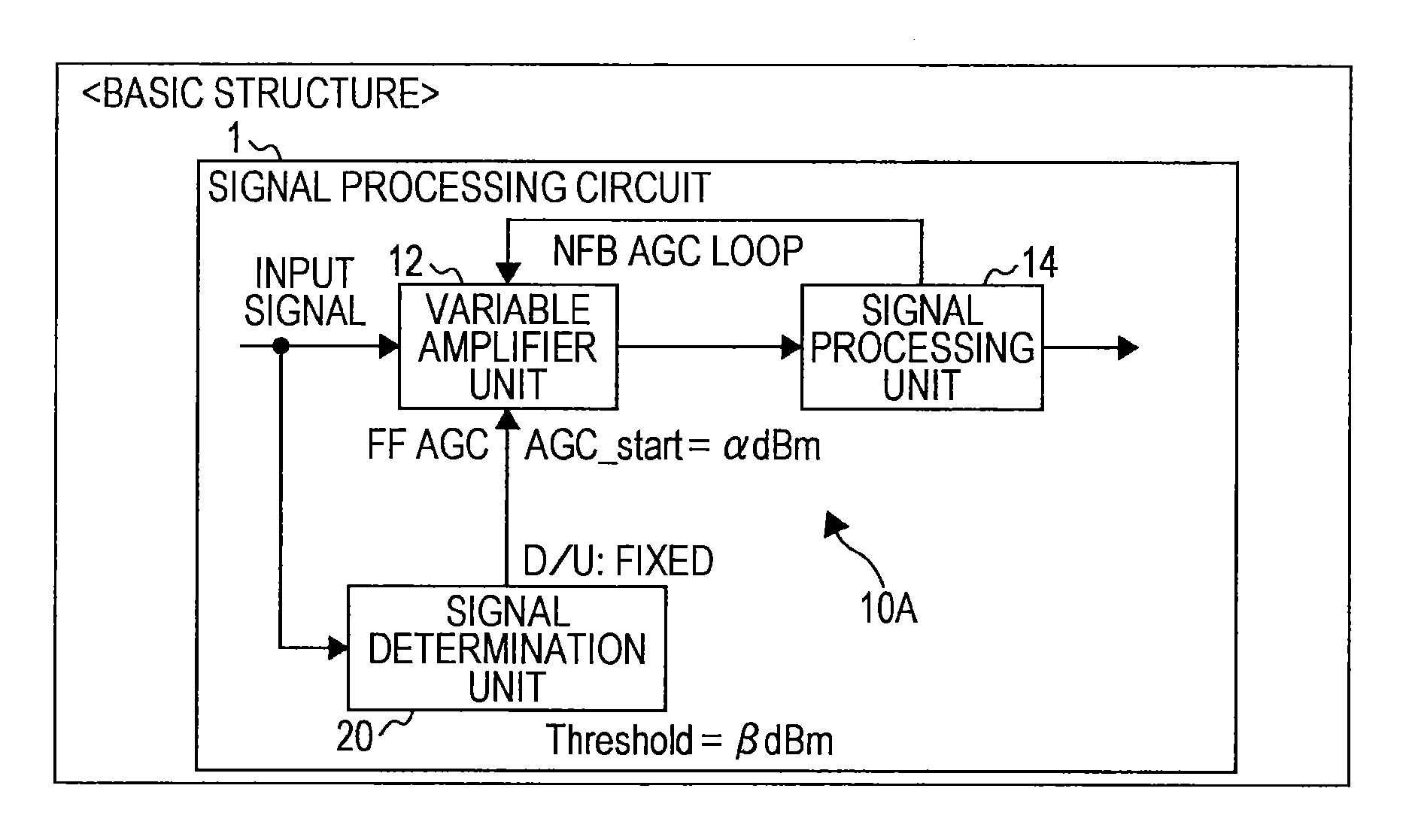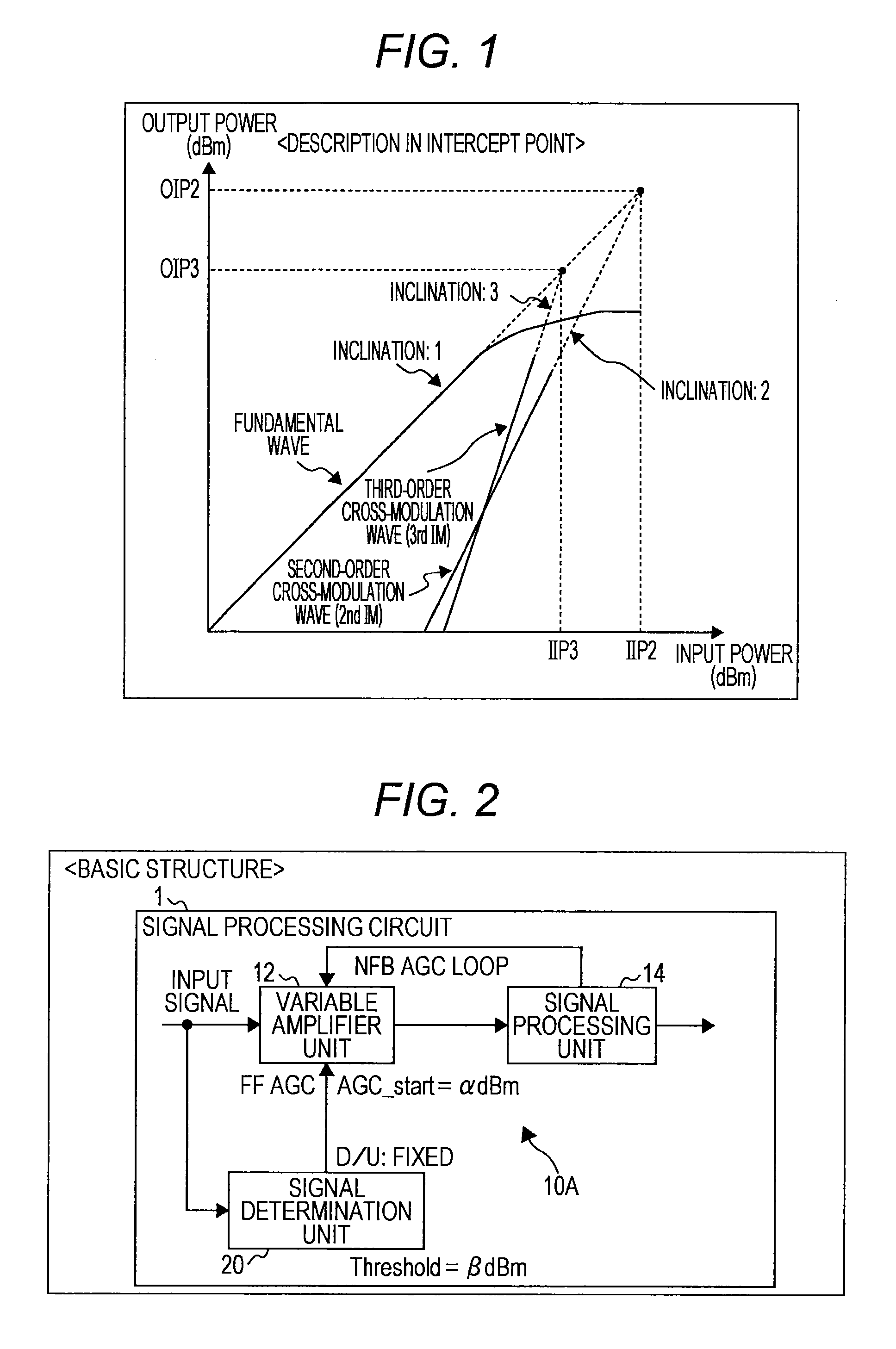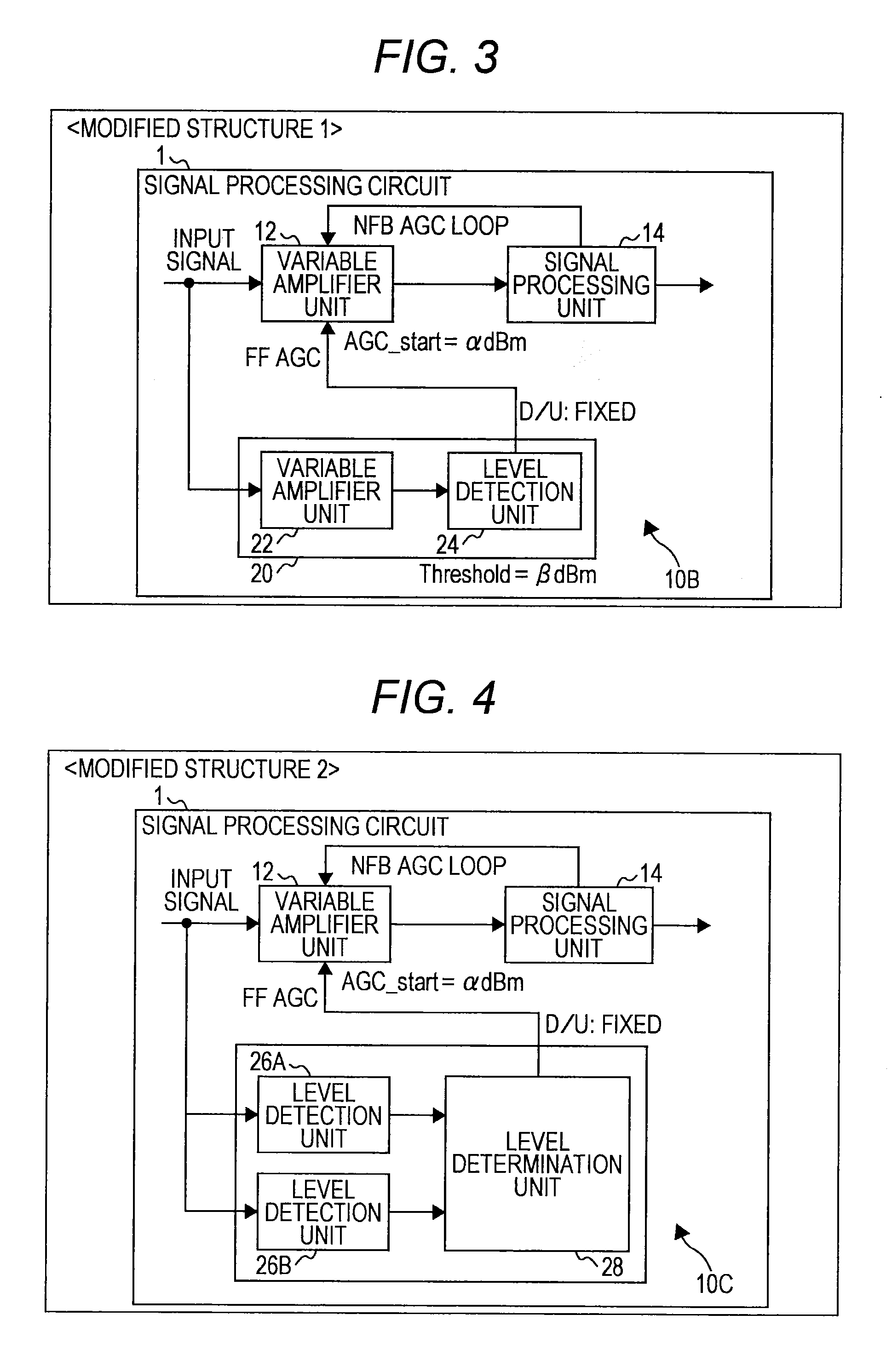Gain control circuit, communication device, electronic appliance, and gain control method
a gain control circuit and communication device technology, applied in amplifiers, semiconductor devices/discharge tubes, amplifiers, etc., can solve problems such as intermodulation distortion, significant reduction of reception quality, and so on
- Summary
- Abstract
- Description
- Claims
- Application Information
AI Technical Summary
Benefits of technology
Problems solved by technology
Method used
Image
Examples
example 1
Operation of Example 1
[0088]FIGS. 7 to 9 are diagrams for describing an operation of the communication device 810A of Example 1. Here, FIG. 7 is a diagram showing a relationship between an input level and an SN ratio (SNR) of the communication device 810A. FIG. 8 is a diagram showing a relationship between the amount of attenuation of the input amplifier unit 812 and an SN ratio and IIP3 where a desired wave is at −30 dBm. FIG. 9 is a diagram showing a relationship between the amount of attenuation of the input amplifier unit 812 and an SN ratio and IIP3 where a desired wave is at −14 dBm.
[0089]As shown in FIG. 7, the start point of AGC is at −50 dBm. It can be seen that the noise characteristic is desirable when the input level is high.
[0090]FIG. 8 shows operating points where the desired wave is at −30 dBm, and at this time, the threshold of the level detection unit 824 is set at −30 dBm. For example, when assuming the required IIP3 where the signal level of an interfering wave is...
example 2
Structure
[0092]FIG. 10 is a diagram for describing a communication device (including a receiving circuit) of Example 2. A communication device 810B is different from the communication device 810A of Example 1 in the structure of the signal determination unit 820. Specifically, a signal determination unit 820B includes a variable amplifier unit 822 (corresponding to the variable amplifier unit 22), and a level detection unit 824 (corresponding to the level detection unit 24). As the variable amplifier unit 822, a wide bandwidth variable gain amplifier is used so that the interfering wave can also be appropriately processed, but since the noise characteristic does not have to be good, one which is proportionally smaller in size than the variable amplifier unit 812 on the main signal path is used. The signal determination unit 820B is provided before the input amplifier unit 812, and the detection result is used as the gain control signal GC2, and the input amplifier unit 812 is thereb...
example 3
[0101]FIG. 12 is a diagram for describing Example 3. Here, (A) of FIG. 12 shows an arrangement image of a plurality of communication devices within an electronic appliance, (B) of FIG. 12 shows an example detailed structure of the communication devices, and (C) of FIG. 12 shows an example of frequency arrangement of carrier frequencies.
[0102]Example 3 is an example application where a plurality of communication devices are arranged inside the housing of one electronic appliance and communication is performed. For example, this is a mode where all the communication devices (communication chips) are mounted on the same board in one electronic appliance, and each carrier carrier frequency is set in advance. A case is assumed where more than three sets regarding transmission / reception are randomly arranged on the circuit board inside the electronic appliance with no respect to the arrangement, the directivity of the radio wave or the like.
[0103]For example, in FIG. 12, a case where 3-ba...
PUM
 Login to View More
Login to View More Abstract
Description
Claims
Application Information
 Login to View More
Login to View More - R&D
- Intellectual Property
- Life Sciences
- Materials
- Tech Scout
- Unparalleled Data Quality
- Higher Quality Content
- 60% Fewer Hallucinations
Browse by: Latest US Patents, China's latest patents, Technical Efficacy Thesaurus, Application Domain, Technology Topic, Popular Technical Reports.
© 2025 PatSnap. All rights reserved.Legal|Privacy policy|Modern Slavery Act Transparency Statement|Sitemap|About US| Contact US: help@patsnap.com



